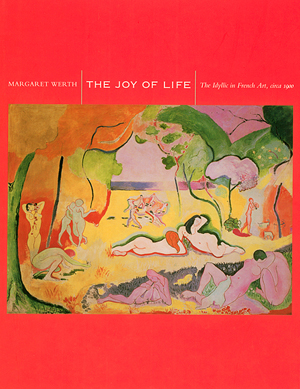3:15 p.m., Jan. 23, 2003--A new book tells the backstory to Henri Matisse's "The Joy of Life" and other classic idyllic paintings created around the turn of the 20th century.
 |
| Margaret Werth, assistant professor of art history: "I concentrate on a few works so I can do justice to their complexity." |
"The Joy of Life: The Idyllic in French Art, Circa 1900," by Margaret Werth, assistant professor of art history at the University of Delaware, places three avant-garde French artists in the context of their times. This comprehensive study shows how turn-of-the-century French culture and politics influenced the creation of idyllic art.
The book focuses on three artists—Matisse, Puvis de Chavannes and Paul Signac—and offers detailed analyses of three works: Puvis' "Summer," Signac's "In the Time of Harmony" and Matisse's "Bonheur de vivre" or "The Joy of Life." Werth analyzes the contemporary responses to the works and addresses how the artists might have been influenced by their artistic contemporaries, by French politics and culture, and by the changing art world.
The book shows how Puvis, one of the most widely celebrated French painters of idyll, influenced Signac and Matisse, as well as earlier artists like Vincent Van Gogh.
The book's cover features a striking reproduction of "The Joy of Life,'' Matisse's first grand-scale idyllic painting. The cover is made more striking because color reproductions of the original were rare until the last decade. The canvas was owned by Dr. Albert Barnes, a collector who disapproved of color reproductions, and the original was inaccessible to those who could not visit the Barnes Foundation in suburban Philadelphia where it hung in a stairwell. In 1993, the foundation mounted a record-breaking traveling exhibition with a color catalog, and the painting became accessible to an international audience.
Werth said she hopes to give readers different lenses through which to understand the paintings—critical analysis of the social and political issues of the day and of the works of art produced in that context. "I concentrate on a few works so I can do justice to their complexity" she said.
Stephanie Fay, acquisitions editor at University of Calfornia Press, said Werth's book fit their line because UC Press has a long-standing tradition of publishing art books based on original research.
John R. Klein, author of “Matisse Portraits,’’ called the book a very good example of an interdisciplinary work that combines elements of sociology, psychology and political history with art.
 |
| The Joy of Life: The Idyllic in French Art, circa 1900 |
“I would say that Werth’s book is an important example of a general trend to treat modern art in a more integrated way, instead of separating artists into avant-garde and reactionary camps,’’ said Klein, an associate professor of modern and contemporary art at the University of Missouri-Columbia. “Also, in the field of art history, it is an important contribution to the study of large-scale decorative mural painting, a topic of great interest now.’’
On March 12, Werth will lecture on Matisse's portrayals of women during an all-day symposium sponsored by the Museum of Modern Art at Manhattan’s Gramercy Theatre.
Werth, in her second year at UD, is now at work on a book on how the human face is represented and reconfigured in painting, photography and early cinema around 1900.
She teaches a graduate seminar on modern portraiture and is organizing a scholarly symposium on modern portraiture to be held at UD in the fall of 2003. A graduate of Boston University, Werth holds a master’s degree and a doctorate from Harvard.
Article by Kathy Canavan
Photo by Kathy Flickinger
|

